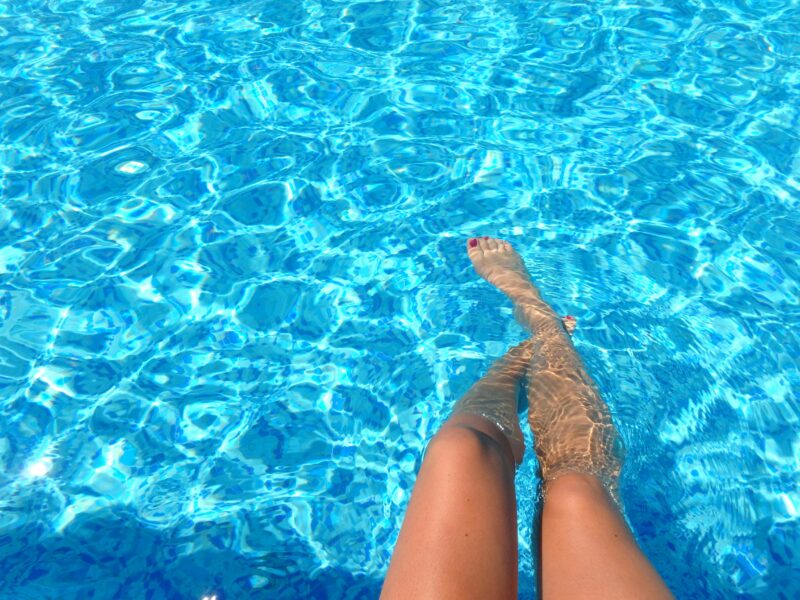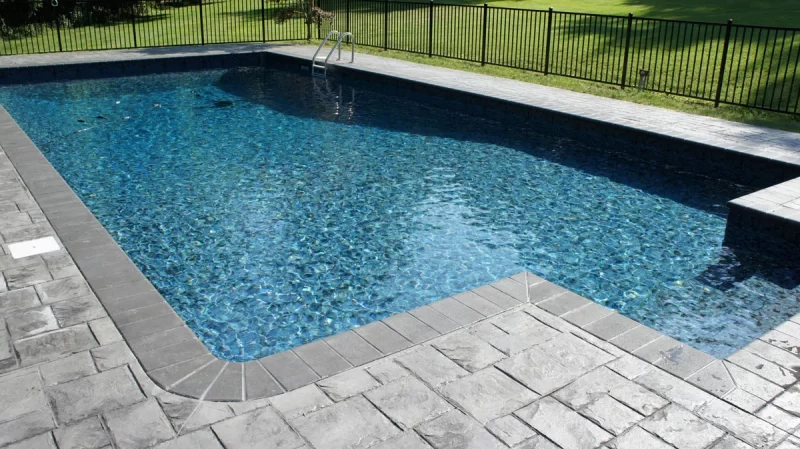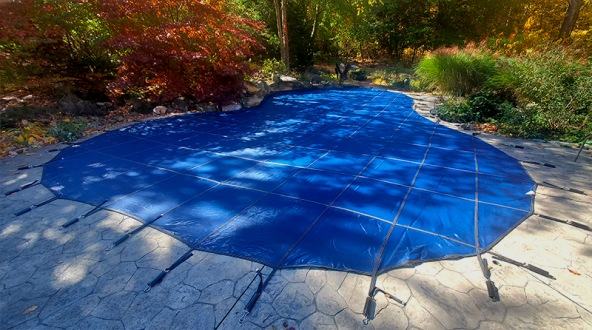Pool Cover Q&A: How Should I Cover a Pool for Winter? Answers
Pool owners and dealers: keeping an above-ground pool protected from the elements can be challenging during winter. If you’re not prepared for heavy winds, snow, and frigid temperatures, you might end up paying more for unnecessary pool maintenance in the long haul.
Aside from knowing how to install a pool cover, the next most important factor in keeping your pool safe with a pool cover is knowing how to cover a pool for the winter.
The good news is that we have you covered for all things pool cover installation for the winter. For more than 20 years, Kayden Liners has helped pool owners and dealers with all their winter pool cover needs.
If you’re looking for how to cover a pool for the winter, then you’ve come to the right place. In this article, we’ll cover five important tips for learning how to cover a pool in the winter, keep it safe, and ensure it’s effective throughout the cold season.
Let’s dive in!
How should I cover a pool for winter? 5 tips
|
1. Use weighted objects on your winter pool cover
Our first tip — actually, all of the tips on this list — are very straightforward in terms of implementing them. To ensure the effectiveness of a winter pool cover, place weighted objects on top of the cover.
You can use winter air pillows, water jugs, or other solid weights to keep solid ice sheets from forming on the surface of the pool water.
Place the weights in the center of the pool, with the pool cover pulled tight over the object. The cover should press the object into the water. Inflate the object (or air pillow) with air.
Since water expands when frozen, buy enough objects that can be filled with air to cover the pool. You’ll want to ensure the objects cover about 10% of your pool’s surface area.
2. Prepare for winter winds

Wind is a pool cover’s enemy. Above-ground pool covers can be damaged if the wind makes its way under the edges of the cover. As a result, the wind will flap up the cover.
To ensure a pool stays covered and taught, secure the winter cover’s cables with a wench. Use heavy objects like milk jugs to weigh down the cables.
You can also use cover seals and clips to keep the cover taut and smooth. Bungie cords work as well.
3. Keep an eye on your pool’s water level
The water level: if it drops more than one inch, the water can place stress on the cover. If your pool loses six to 12 inches of water — and if rainwater pools on top of the cover — the rain can damage the cover and the pool.
To prevent damage to your cover and your pool from losing water, you’ll want to fix leaks before closing your pool for the season. As well, you can also add water under your pool cover to ensure your cover doesn’t become damaged.
You’ll also want to be mindful of the water on top of the winter cover. For example, losing ¼ to ½ of an inch of water is okay, but any more than this amount can place stress on the cover.
If your pool loses six to 12 inches of water, pool water could flow over the edges of the pool and lower the pool’s water levels.
If water begins to pool on top of the cover (or around the pool) beyond acceptable levels, pump the water out at regular intervals with a pool cover pump.
Also, sometimes, holes can find their way in pool covers.
If your cover has small holes, you can place the pump far away from the holes. You’ll want to make sure not to pump out water through the holes in the cover to avoid damaging the cover.
4. Remove leaves from your winter pool cover
Another weather mess that occurs during early winter is the spread of tree leaves on top of and around a pool. To avoid messy leaves from damaging your pool or pool cover, try using a skimmer net or a pool brush to collect leaves off the top of the pool cover.
If your backyard is located near large trees within 50 feet of the perimeter of the pool, you may want to cover the pool with a safety net.
Little by little, after the leaves have fallen, you can remove the net and dispose of the fallen leaves.
5. Check your pool cover at regular intervals
If you’re anything like us, after you’ve changed your pool liner in the fall, you likely don’t want to think about pool maintenance until after winter is over.
That’s a mistake, though. We learned the hard way.
We learned that pool care is a year-round labor of love — a labor that must be tended to even during winter.
You’ll need to check your pool cover often, not just for dewatering or dredging foreign objects off the top of the cover. You’ll want to check a pool cover to pull out slack, correct wind gaps, and re-adjust weights on the cover.
These small checklist items can seem tedious, but they only take a moment. And, if you make sure to monitor your pool cover a couple of times a month, the money you save via damage control will be well worth the extra effort expended on pool cover maintenance.
Kayden’s bonus tip for winter pool covers
As we continue to place an emphasis on environmental stewardship through the manufacturing of pool covers that are energy efficient, sustainable, and eco-friendly, you can support our planet by opting to do business with green businesses.
Given that the pool cover market is expected to see a near 10% annual growth rate over the next decade (Dataintelo.com, 2024), you can buy better products by opting for companies that opt for cleaner manufacturing processes.
Curious about what Kayden Manufacturing does to be environmentally friendly?♻️ Find out on our Twitter/X page here!
Still have questions about covering your pool for winter?
The above-mentioned tips for covering a pool for the winter are straightforward and simple. Best of all, they don’t take a ton of time.
Sometimes, a little upfront maintenance can go a long way. A little upfront maintenance on an above-ground pool winter cover is key to protecting one of your most important backyard assets — your pool.
But, we understand that finding winter cover accessories and pool safety covers isn’t always as simple as reading a blog like this one. That’s why we’re here for you.
If you have any questions about pool safety covers, winter pool maintenance, or anything pool-related, our pool manufacturing and maintenance specialists are more than happy to help. For help with your next pool project, don’t hesitate to contact us today.
We’re all ears.
P.S. – So, you actually read through this whole blog. And, we must apologize profusely for how nonsensical it may have seemed at times. But, you’re actually amazing.
You should really click on the link below and talk to us, because we’ll share just what you’re looking for in our time together. Thanks for reading. We just like to keep you on your toes.
More Helpful Content for You
10 Simple Pool Liner Cleaning/Care Tips to Keep Pool Liners Clean
A pool liner can last anywhere from five to 20…
6 Benefits of Being a Kayden Dealer
In the world of pool building and renovation, the products…
A Quick and Comprehensive Guide to How to Clean a Pool Cover
Keeping a pool maintained and serviced is a no-brainer. But,…










